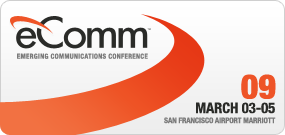
Let's face it; search engines can easily make a commodity of a brand. Even when a brand team has done a great job of positioning a product in it's category, the points of differentiation and emotional connections built for the brand are dissolved due to factors such as discount retailers, aftermarket resellers and endless parity. Smart search marketing can help with this dilemma; however there is still a gaping chasm between the search education of many brand marketers; and the opportunities available to effectively define your brand through search engines.
The above is the number one result on the SERP (search engine results page) for the term, "whirlpool". If you are a brand manager at Whirlpool, you are probably giving your SEO team a high five for helping secure the number one spot for your brand name (well, it is becoming easier to rank first for your own brand name as the search space matures-the high five may have happened a few years ago). While it is essential to rank number one for your brand name; it is by no means a win. In fact, the above listing probably does not come close to the actual brands positioning statement outlined by Whirlpool; and I am sure it is not how Whirlpool executives want consumers to connect with the brand.
Why is it that many brand managers do not see search copy as an important touchpoint?
Can you imagine if Whirlpool's positioning statement read like the search result above;
"Whirlpool makes major appliances for your whole home. Current appliance owners can download appliance literature, contact customer..."
I can only imagine what type of advertising campaigns that would lead to :)
In stark contrast to the brand message that Whirlpool is conveying in the search result we see above (it is obvious that Whirlpool did not intentionally create the search copy to communicate their core brand message; but in a 15-second-of-fame-world--you are how you are found), they have created this following commercial;
Is it just me, or does this TV spot communicate something wholly different than the search result above? TV does a better job of conjuring human emotion, but does that mean a brand marketer should simply ignore how they are communicating via text?
The question I have for all of you is, when is it most important for a brand to be effective in its communications?
- When a consumer is actively seeking a brand (search)
- When a consumer is focused on something entirely different (TV Spot)
This may seem like a leading question, and for those of us in digital marketing, the answer may seem obvious; but if the answer is so obvious, why are we still seeing the type of disconnect exemplified in the case above?
Weigh in; I would love to hear your thoughts.
Related articles by Zemanta
- Meta Tags and Web 3.0 (sciencetext.com)
- Professional Web Presence & Visibility: Key Terms (lookuppage.com)
- Adobe Introduces Flash Info Site for SEO's (marketingpilgrim.com)
![Reblog this post [with Zemanta]](http://img.zemanta.com/reblog_b.png?x-id=c22bc502-ebad-4b17-bee9-332e647d7d5f)


![Reblog this post [with Zemanta]](http://img.zemanta.com/reblog_b.png?x-id=f9d66f1f-26cd-4b92-b14c-21bb2b6a1696)
![Reblog this post [with Zemanta]](http://img.zemanta.com/reblog_b.png?x-id=0d459515-77c8-4895-921d-07ecbafb0e38)

![Reblog this post [with Zemanta]](http://img.zemanta.com/reblog_b.png?x-id=a0ba696d-4554-456a-976a-4bb86a1e79c5)

![Reblog this post [with Zemanta]](http://img.zemanta.com/reblog_b.png?x-id=9c593f26-54b5-4666-b87e-f934baea496b)


![Reblog this post [with Zemanta]](http://img.zemanta.com/reblog_b.png?x-id=245f9211-2888-481a-a0d7-aae3e0256e51)

![Reblog this post [with Zemanta]](http://img.zemanta.com/reblog_b.png?x-id=1f03b092-0810-4e65-a9a9-d5afa0a8ef2f)

![Reblog this post [with Zemanta]](http://img.zemanta.com/reblog_b.png?x-id=511c626e-61f2-4e84-a1f2-efc9a96abbd4)
![Reblog this post [with Zemanta]](http://img.zemanta.com/reblog_b.png?x-id=16f9fee1-f4c8-44ad-8b6f-5d02f120fcc4)

![Reblog this post [with Zemanta]](http://img.zemanta.com/reblog_b.png?x-id=5e40fd60-4168-43da-9555-4572900663ba)
![Reblog this post [with Zemanta]](http://img.zemanta.com/reblog_b.png?x-id=68db6597-3c5d-4aba-9e45-8e8d6717eaad)

![Reblog this post [with Zemanta]](http://img.zemanta.com/reblog_b.png?x-id=f07d7190-aa17-4214-b0cf-1d879dc00ae5)
![Reblog this post [with Zemanta]](http://img.zemanta.com/reblog_b.png?x-id=90c79da6-57d5-4647-9246-58c206eb58c4)

![Reblog this post [with Zemanta]](http://img.zemanta.com/reblog_b.png?x-id=317962e8-d8f0-4fbe-b734-95eb15eb4e15)
![Reblog this post [with Zemanta]](http://img.zemanta.com/reblog_b.png?x-id=bfd18c50-32e5-4da8-9199-42d171018b69)

![Reblog this post [with Zemanta]](http://img.zemanta.com/reblog_b.png?x-id=3247c48c-476e-4c10-9c29-11f8715f9151)

![Reblog this post [with Zemanta]](http://img.zemanta.com/reblog_b.png?x-id=a9f68087-77d3-417f-b49e-14b3f87d5dc4)
![Reblog this post [with Zemanta]](http://img.zemanta.com/reblog_b.png?x-id=c7ba7dab-9a05-4560-8f12-7ebe7b35ff26)

![Reblog this post [with Zemanta]](http://img.zemanta.com/reblog_b.png?x-id=1a37ed40-18cd-4b2c-96c0-ebe3391855ed)